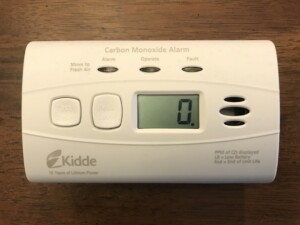Washington State Carbon Monoxide Alarm Rules:
What is Carbon Monoxide & why should I care about it?
Carbon monoxide (CO) is an odorless, colorless, tasteless gas that is deadly. We can only detect carbon monoxide when we start to feel the effects of carbon monoxide poisoning. The most common symptoms of CO poisoning are dizziness, headaches, upset stomach, chest pain, vomiting, and confusion. Carbon monoxide will kill a person if inhaled in large enough quantities. The most significant hazard of CO poisoning is that if you are sleeping, you can die before you feel any symptoms. While some people are at higher risk of CO poisoning, no one is immune. Every year more than 20,000 people visit the Emergency Room with CO poisoning concerns and 4,000 are hospitalized. In the United States, approximately 400 people die each year from Carbon Monoxide poisoning.
Where does Carbon Monoxide come from?
Carbon monoxide is found in fumes whenever propane, natural gas, wood, charcoal or other combustible fuel is burned. Gas furnaces and stoves, wood and gas fireplaces, cars, grills, and generators all produce CO when operating. If the fumes are not properly and safely vented, Carbon Monoxide can build up in the home.
When should Carbon Monoxide alarms be installed?
-
Any home sold in Washington state must be equipped with a Carbon Monoxide alarm.
Where should Carbon Monoxide alarms be installed?
-
Alarms must be located outside of each separate sleeping area, in the immediate vicinity of the bedroom(s) and on each level of the residence.
When to replace alarms?
The alarm manufacturer will specify the expiration/replacement date for the alarm. Typically this is within 5-7 years of manufacture.
Additional guidelines:
-
Install the alarm according to manufacturer recommendations.
-
Do not place the alarm in direct sunlight, near HVAC registers, or windows.
-
Single station carbon monoxide alarms must be listed as complying with UL 2034, and installed in accordance with the code and the manufacturer’s instructions.
-
Combined CO and smoke alarms are permitted.

